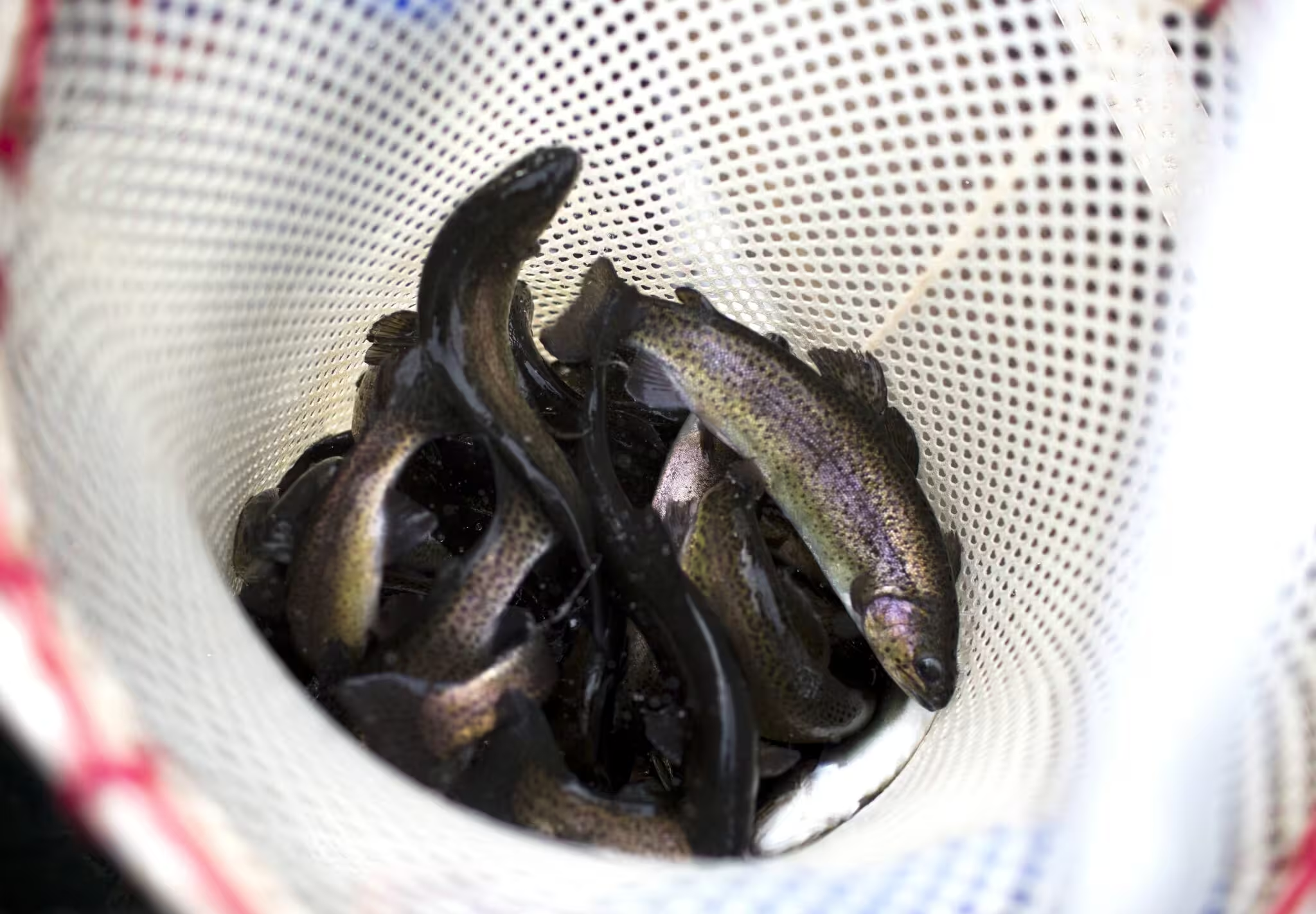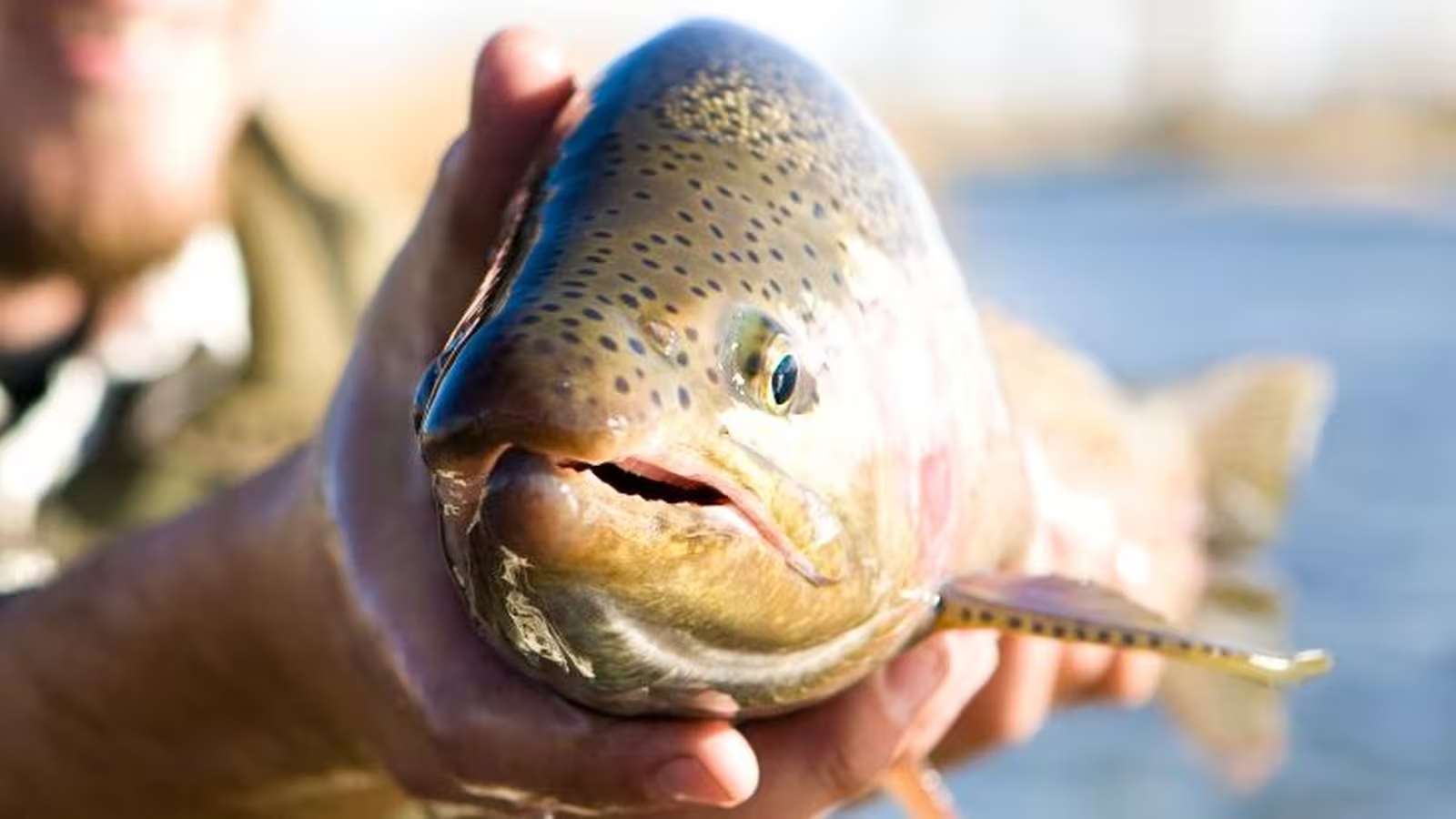4 Minutes
Each year, an estimated trillion fish are extracted from the world’s waters, with the vast majority destined for human consumption. Although this practice sustains billions, new scientific findings are casting a spotlight on the significant suffering these animals may endure during the harvest process. A recent study, spearheaded by Dr. Cynthia Schuck-Paim at the Welfare Footprint Institute, delivers the first quantitative analysis of the pain endured by fish during traditional slaughter techniques.
The Rainbow Trout Case Study
Rainbow trout (Oncorhynchus mykiss), originally native to the cold tributaries of the Pacific Ocean, now represent a staple farmed species across every continent except Antarctica. Typically, commercial slaughter involves removing fish from the water and leaving them to asphyxiate in air or ice water. While efficient and widely practiced, these methods have raised concerns among animal welfare advocates and scientists alike.
The new research reveals that trout exposed to these conditions can suffer between 2 and 25 minutes of acute pain and distress, with an average maximum recorded at 22 minutes. Such prolonged suffering is caused by physiological stressors that escalate shortly after removal from water, including the collapse of fragile gill structures and the buildup of carbon dioxide in the bloodstream, which ultimately leads to unconsciousness but only after a period of considerable distress.
Scientific Advances: The Welfare Footprint Framework
Measuring animal suffering has historically been a challenging task. However, the advent of the Welfare Footprint Framework (WFF) provides a systematic way to assess and compare negative states, such as pain or stress, in animals. This framework enables researchers, veterinarians, farmers, and policy makers to quantify both the intensity and duration of suffering and to make evidence-based improvements in animal welfare across various industries.
According to Dr. Schuck-Paim and her team, societal concerns about animal welfare have never been greater, as noted in emerging legislation, ethical certifications, and increased consumer scrutiny. "Our findings provide the first quantitative estimates of pain during fish slaughter, demonstrating the potential scale of welfare improvements achievable through effective stunning methods," the study’s authors emphasize.
Key Findings: Pain Duration and Intensity
Upon reviewing a broad spectrum of published literature, the international team outlined the immediate and harmful neurochemical responses that fish display after just five seconds of air exposure—reactions comparable to what humans experience as severe distress or aversion. Observable behaviors in the fish, such as frantic twisting and rapid gasping, further confirm a state of extreme discomfort.
The research quantifies that, when standardized by harvest yield, the average duration of moderate to intense pain is about 24 minutes per kilogram of fish, with some cases exceeding one hour per kilogram. The severity and duration can vary according to species, individual size, and slaughtering conditions.

Electrical Stunning: A Promising Alternative?
To address these welfare concerns, electrical stunning has been suggested as a humane killing technique. By rapidly inducing unconsciousness, electrical stunning may reduce suffering dramatically—potentially eliminating up to 20 hours of pain for every dollar invested in the necessary technology. However, current applications show variability in effectiveness, with some fish not being rendered immediately unconscious.
As Dr. Schuck-Paim’s team notes, the overall impact of any stunning method hinges on managing stress throughout the harvest process. These insights underline the importance of refining practices not only during slaughter but also across the entire supply chain.
The Path Forward for Sustainable and Ethical Aquaculture
This research underscores an urgent need for the seafood industry to adopt more humane slaughter practices at scale. The Welfare Footprint Framework enables producers, regulators, and advocates to identify the worst pain points in current systems and prioritize interventions that offer the greatest welfare benefits. Transparent scientific measurement also helps inform policy, shape consumer choice, and drive technological innovation towards more ethical food production.
Moreover, by casting light on the true extent of suffering associated with the world’s most common fish slaughter method, the study invites a broader discussion about our accountability toward the welfare of animals in our food systems.
Conclusion
The quantification of pain in fish during commercial slaughter marks a significant advancement in animal welfare science. As data-driven frameworks such as the WFF become increasingly utilized, both industry and society are better equipped to push for ethical, evidence-based improvements in aquaculture. By acknowledging—and acting upon—the suffering endured by billions of fish every year, we can move toward more compassionate and sustainable practices that respect both human and animal well-being.
Source: nature



Comments